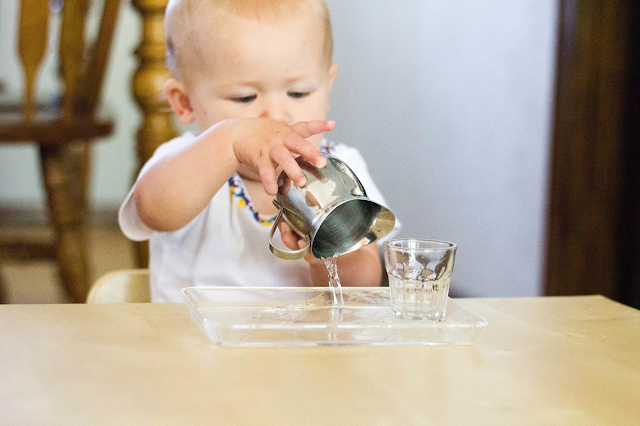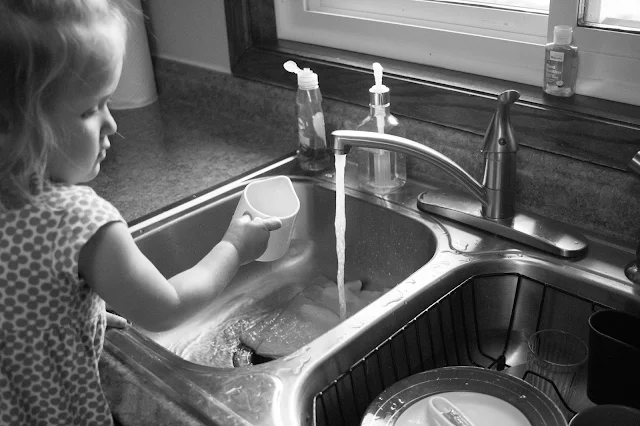In order to create an environment that promotes independence for my children, we ensure that they have access to water in as many ways as possible throughout our home. But, before I share how I have set up our space, I want to talk a little bit about expectations. The realities of water use in a Montessori home may be different that what you expect.
Let's consider our expectations and the realities of this type of independence.
Let's consider our expectations and the realities of this type of independence.
There will be Spills
I want to be clear that I'm not saying that if you set up water access like this that your kids will suddenly stop exploring with water. Or that this will never create a mess. Because they won't and it will. Water exploration is normal, but that's doesn't mean that water independence isn't worth it. Small children, toddlers especially, are still in the process of mastering their motor skills, they will make mistakes. And, hey, it's really fun to watch water fall to the floor or splash in a bowl.
So, they will explore. And, they will spill. Then, they will do it again.
So, they will explore. And, they will spill. Then, they will do it again.
And, in these instances, it's annoying. It's hard. I will openly admit that. It would be way easier to just say "nope, you're not ready." But, I have seen what they will be missing. The difficulties for me are not worth the loss to them. Remember that this exploration is their work. This is how they are learning, this is how they are growing. And, it may be inconvenient but it will pass and provides them more opportunity for work -- through cleanup.
It Doesn't Mean Chaos
Now, I don't want this to imply that children should just run free and make huge messes with water. It's important to set limits for your children. Montessori is about freedom, but freedom within limits. So, set them and it doesn't have to be total chaos.
One of the best was to set these limits is through preparation of the environment. So by creating your space, which we will talk about in my next post, you naturally create limits to what your child can do. For example, one environmental limit may be the amount of water you have available. So, your limit may be that only a small amount of water is available at one time -- and that's OK! If your 14-month-old is only ready for 2 ounces in a pitcher (which is about where Nora was) then use 2 ounces in a pitcher!
You can also set a limit on your children's behavior. If you don't want the kitchen sink to be used for free water play, then set the limit on what uses are alright. These limits can help to make the water less difficult for you and more successful for your child!
Stay tuned for advice on how we create our Montessori water station to help make it work practically!
What are the realities for water use in your home? How have your expectations been met or challenged?

One of the best was to set these limits is through preparation of the environment. So by creating your space, which we will talk about in my next post, you naturally create limits to what your child can do. For example, one environmental limit may be the amount of water you have available. So, your limit may be that only a small amount of water is available at one time -- and that's OK! If your 14-month-old is only ready for 2 ounces in a pitcher (which is about where Nora was) then use 2 ounces in a pitcher!
You can also set a limit on your children's behavior. If you don't want the kitchen sink to be used for free water play, then set the limit on what uses are alright. These limits can help to make the water less difficult for you and more successful for your child!
Stay tuned for advice on how we create our Montessori water station to help make it work practically!
What are the realities for water use in your home? How have your expectations been met or challenged?




